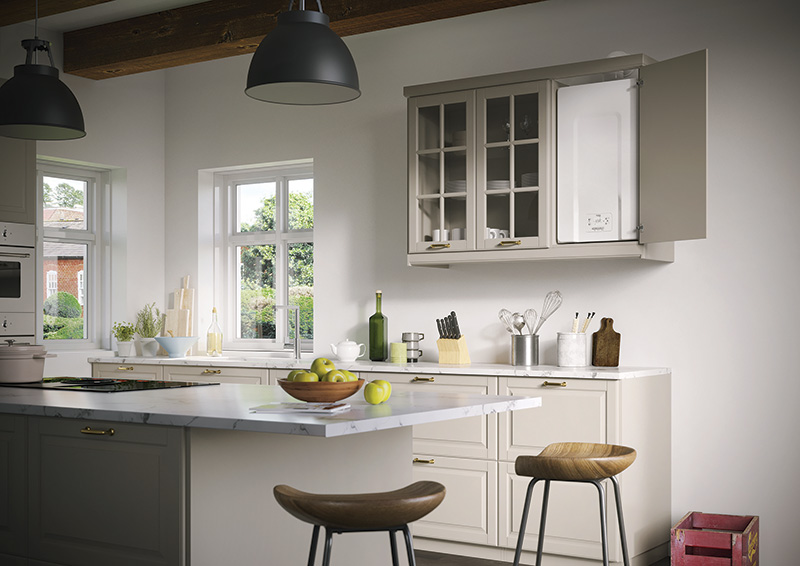
Jul 13, 2020 | News & Events
Vokèra by Riello has launched the all new Vision Plus condensing boiler range. Vision Plus adds to the features and benefits of its predecessor – including new stainless steel heat exchanger technology on selected models – to offer high flexibility in performance and installation for a wide variety of domestic applications. Vokèra, through its parent company Riello Group, is a part of Carrier, a leading global provider of innovative heating, ventilating and air conditioning (HVAC), refrigeration, fire, security and building automation technologies.
The new range includes a choice of seven boilers: four combination boilers with outputs of 25 – 40kW and three system boilers with outputs of 20 – 30kW, all with a standard seven-year warranty. Featuring a click-fit flue system for easy installation across the range, and combination models with a universal pipe connection layout, the new Vision Plus is a great choice for installers and homeowners alike.
Vision Plus combines Vokèra’s extensive knowledge of boiler design and performance in an innovative, installer-friendly range that offers Class A energy efficiency in accordance with the Energy Related Product (ErP) Directive. All models are feature-packed to deliver energy-saving comfort and long-term reliability and have the OpenTherm controls protocol embedded.
As a further innovation, the 35kW and 40kW combination boilers and all three system boilers in the Vision Plus range feature a new, optimised radial stainless steel heat exchanger, which enables a wide modulation ratio of 1:8 for optimum operating efficiency and flexibility. This means that the Vision Plus 40C combi, for example, can modulate down to 4.9kW and the 35C down to just 4.4kW. This ensures that boiler cycling is reduced even when the central heating load is minimal. Ideal for larger homes, the 40C delivers an excellent domestic hot water rate (DHW) of 16.4 litres per minute at ΔT 35 C, while the 35C has an equally impressive DHW rate of 14.2 litres per minute at ΔT 35 C.
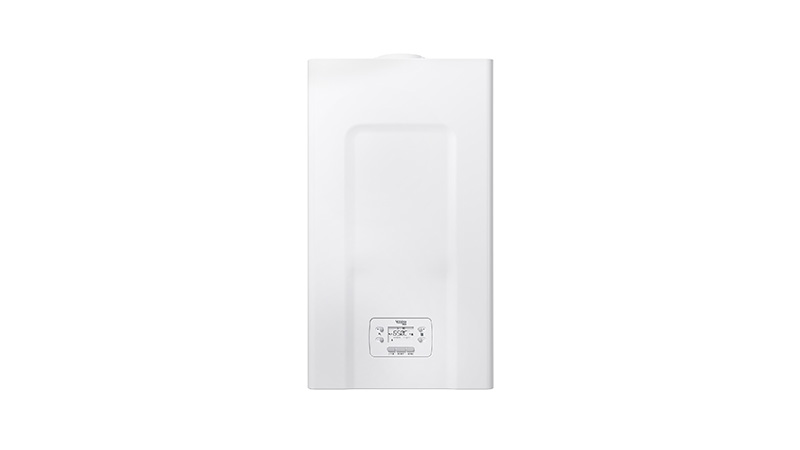
The 25C and 30C combination models use a proven aluminium heat exchanger, offering high thermal conductivity and combining the benefits of a lightweight, compact design. These models have small installation footprints and the rear flue option makes it easy to fit these compact appliances into small spaces, such as kitchen cupboards. They are also lightweight for easy handling and transportation.
All Vision Plus combination boilers have a built-in filling loop and include an embedded seven-day time clock with three modes of operation and back-lit LCD display for energy-saving comfort and control of heating times throughout the week. The universal pipe connection layout on all combination models also makes it easier when replacing another boiler with Vision Plus.
The system heat-only Vision Plus boilers can provide central heating, be matched with Vokèra AquaFlow unvented cylinders to provide domestic hot water storage, and be connected to any existing S-Plan or Y-Plan system. A wide modulation ratio ensures flexibility and efficiency and, thanks to the Modbus protocol, the entire Vision Plus range is designed to be ‘hybrid ready’ for integration into low carbon heating system designs. For further flexibility, all system models boast a built-in relay, which allows for easy integration with zone valves.
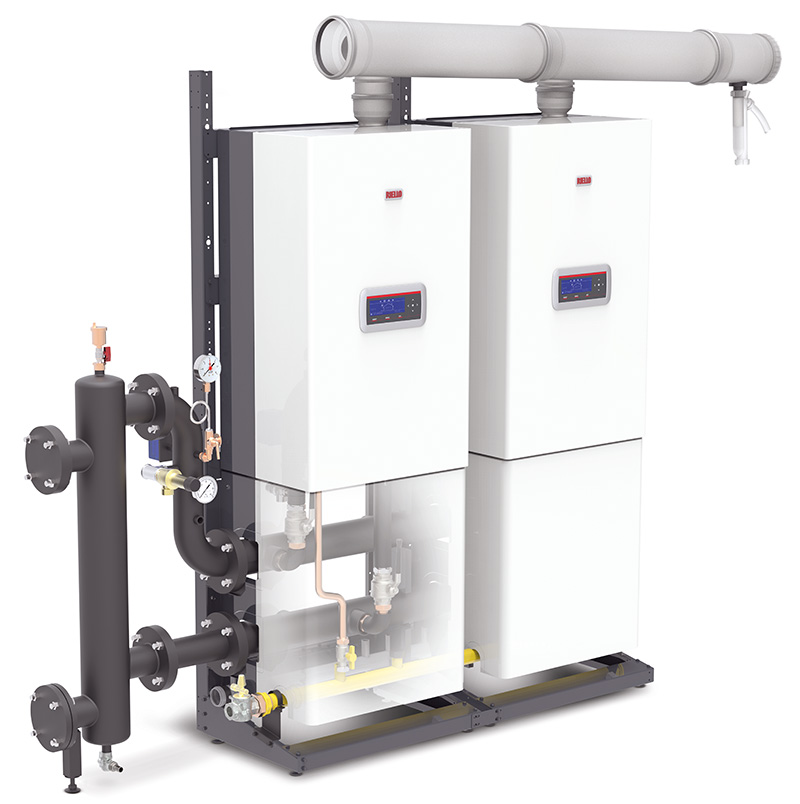
Mar 5, 2020 | News & Events
Flexibility is fast becoming a primary focus for many of today’s commercial condensing boiler installations. Martin Fletcher of Vokèra by Riello explores how commercial boiler manufacturers are addressing this need with advanced engineering solutions that combine heating innovation with a wide choice of accessories to create one product with almost limitless configurations.
Changing technology
As anyone involved in the heating industry knows, commercial boilers have changed significantly over the past few decades. These changes are due, primarily, to the introduction of gas condensing technology, which offers significantly greater efficiencies compared with non-condensing products. Typically, commercial boilers were big, floor standing units with a large footprint and in many cases they were sectional products that had to be assembled on site, involving considerable time and labour.
Needless to say modern commercial boilers have come a long way since those early models. Nowadays most appliances tend to be designed with heat engines and burners combined in a single box that can be wall-mounted (or floor mounted on a frame). This takes up a fraction of the footprint of the old sectional boiler and, thanks to condensing technology and associated innovations, modern boilers are able to offer much higher outputs for their size compared with the old non-condensing units.
Driving efficiency
But what has been the main driving force behind these changes? I believe the answer to that question is two-fold: the boiler manufacturers and legislation. Alongside a commitment to continuous product improvement and efficiency by leading boiler manufacturers like Riello Group, the heating industry has been the focus of increasingly stringent regulations to reduce carbon emissions. The urgent need to address climate change has been the motivation for many of the innovative technologies aimed at making our buildings more energy efficient. Given that commercial HVAC systems account for a high proportion of a building’s energy consumption it’s not surprising that boiler technology is among these innovations.
In recent decades the advancements in boiler design, together with regulations to increase energy efficiency in both the domestic and commercial heating markets, have driven the market towards smaller, more high-powered appliances. For example, a two-boiler cascade in our new Condexa Pro range offers around 250kW in a small footprint when compared with the larger footprint of older floor-standing units with a similar output. However, that’s not to say that there isn’t still a market for high-power, floor-standing appliances for certain applications and many manufacturers, including Riello Group, continue to produce them: the key difference is that now there is a choice.
Diverse needs
From a boiler manufacturer’s point of view it is important to be able to offer solutions that fit the myriad requirements of different commercial projects, both new build and refurbishment. At Vokèra by Riello we believe the concept of system flexibility, or what we describe as ‘one product, multiple configurations’ holds the key to meeting the diverse needs of this demanding sector. Indeed, we know from our extensive experience of working with commercial specifiers and installers that the challenges and permutations they encounter are virtually endless, from single standalone and multiple cascade configurations to all the different ventilation, zoning and control requirements.
An installation in, say, a school may call for external boilers in order to free up internal space for an extra classroom or storage facility. Also, although plant room size is not generally an issue, there are occasions where boiler dimensions are a critical factor because of restricted space or access, so the option of a smaller system that doesn’t compromise output is perfect. Different projects will also have different flue gas exhaust requirements – a factor which has been addressed in the development of our new Condexa Pro boilers. Whilst the range is configured for open-flue configurations optional ‘room-sealed’ kits are available that enable each appliance to be re-configured for room-sealed applications. A versatile flue solution, including standard, twin-pipe and concentric is one of the key aspects of system flexibility and not only expands siting possibilities but can be a huge factor when terminating flue gases safely whilst also taking in to consideration suitable ventilation.
Of course, offering this level of flexibility and such a wide range of accessories could be daunting for even the most experienced heating professional. That’s why we believe this approach must come with expert support, if required, from the manufacturer to help customers build different configurations and guide them through the choice of components to meet their particular project specification.
Modularity and control
Modularity is at the heart of the new flexible commercial boiler concept as it enables a number of output sizes to be combined to achieve the required output. Being modular also means greater ease of access to the boiler’s various component parts when it comes to servicing. With a truly modular system units can be combined in multi-cascade configurations and in linear or back-to-back cascade applications. In addition, today’s more sophisticated control technology can play a major part in monitoring and managing the operation of a cascade at optimum efficiency in relation to demand. In fact, having this high level of integrated control means that in some cases an expensive Building Management System may not even be necessary. In addition to these benefits, the latest integrated logic-control (as used in our new Condexa Pro boiler range) enables a ‘managing’ and ‘dependant’ operation, allowing for the interchangeability of modules and for individual units to be isolated for routine servicing without disrupting continuity of operation.
Future flexibility
Looking to the future, we believe flexibility will remain an important consideration in commercial boiler specification, alongside enhanced efficiency and lower emissions in the continuing quest for cleaner, greener heating. Whilst condensing technology already offers high efficiencies and ultra-low NOx emissions, further advancements in technology will enable the next generation of boilers to become even more efficient. We have already seen tighter emissions control with the recent introduction of NOx Class 6, where Class 5 had previously been the standard. This reflects the ongoing drive to improve air quality and achieve climate change targets. As a leading manufacturer of heating solutions, we will continue to only develop and market products that comply with the latest legislation and as the regulatory goalposts move, as no doubt they will, we shall have the foresight and flexibility to change with them.
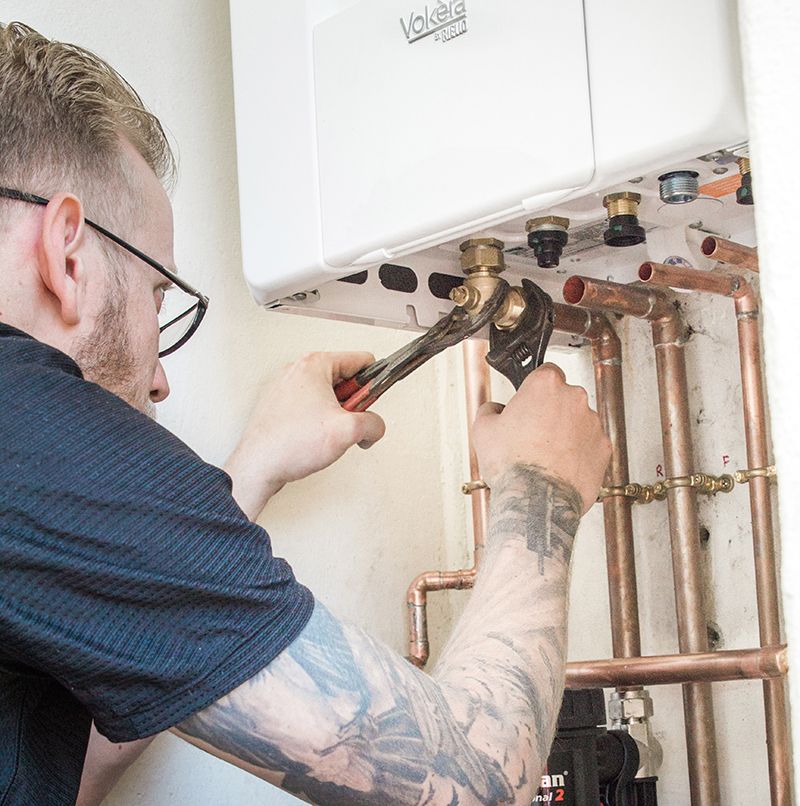
Feb 11, 2020 | News & Events
Although the majority of flueing systems for modern domestic condensing boilers can be relatively straightforward, there will always be some installations that require greater flexibility in siting and sizing. Eric Brawley, Technical Co-Ordinator at Vokèra by Riello tackles the topic of non-standard flueing.
Planning and positioning
A correctly specified and fitted flue is an essential element of a safe and efficient condensing boiler installation. The planning and positioning of the flue is key to keeping people safe from potentially harmful gases and Boiler Flue Regulations are in place to ensure installations meet strict health and safety standards. While most of the flueing requirements that Gas Safe Registered installers encounter on a day-to-day basis will be pretty standard, we believe it is important to be ready and able to deal with more unusual situations should they arise. It is for this reason that we run comprehensive courses covering all aspects of Vokèra boiler installation and commissioning, including flueing, and offer an extensive range of flue variants for all our domestic boilers. Indeed, some of the longest runs possible in the industry are permissible with our flue accessories in both horizontal and vertical options.
Managing pluming
There are, of course, some key considerations when siting any flue for a condensing boiler. Mitigating the possible nuisance of pluming is just one of these considerations. BS5440-1, which covers the flueing and ventilation of gas appliances, specifies the minimum clearances for flue terminal locations to prevent a plume of condensate causing an issue for neighbouring properties or public spaces. As well as the nuisance factor, plumes of water vapour may also cause damp patches on surfaces near the flue terminal. In addition to compliant siting of the flue, installers could also consider using a plume diversion kit, or designing a longer flue to help manage pluming.
Length matters
A non-standard flue will often relate to the length. For example, a longer run may be required when relocating an existing boiler, or where a standard flue isn’t practical for the preferred siting of a new boiler. Installers should always check the maximum overall length against the boiler model they are planning to use as they do vary. For most domestic condensing boilers a standard flue is a 100/60mm concentric. Flue extension lengths are generally available for this type of flue but usually up to a maximum of around 2 metres. Larger concentric flue systems of 125/80mm are also offered by most manufacturers and some may be extended but, again, only up to a maximum of about 2 metres.
For installations that require greater lengths a twin parallel flue system may be available. On some Vokèra models this type of flue can be up to 50 metres on each of the air duct and flue duct, which should cover most requirements. When using our twin pipe systems installers are advised to terminate them with a collector box and a single horizontal or vertical 125mm OD terminal or a two port terminal gate.
Adequate support
Whatever type of flue system is selected it must be adequately supported throughout its length. For flues concealed within a void access must be provided (300 x 300mm) within 700mm of every joint (although this is not necessary with a flexible flue in a constructional chimney). Details of requirements relating to flues in voids were published in a 2019 Gas Safe Register Technical Bulletin and refer to properties, most likely flats or apartments, which have a room sealed, fan assisted boiler with a flue which is concealed behind a ceiling or wall. As the flue removes potentially harmful fumes from the boiler it needs to be accessible for inspection by a Gas Safe Registered engineer, either as part of the annual safety check or in the event of a problem with the heating system.
Rear flueing
For some situations, a rear flue option can offer a versatile alternative to a standard top flue. Where space is at a premium, for example, running the flue directly from the rear of the boiler will keep the overall installation footprint to a minimum. This type of flue can also increase siting flexibility for practical and aesthetic purposes. The direct rear flue option for Vokèra boilers is telescopic and can be cut to 320mm minimum and is adjustable between 600mm and 825mm maximum for optimum versatility.
Verification requests
Following the 2019 Gas Safe Register Bulletin regarding verification that an unusual flue installation complies with the manufacturer’s instructions, Vokèra’s Technical Team has been receiving regular confirmation requests on installations. In order to provide verification we simply ask the attending engineer to supply some photographs of the installation, together with the project address and dimensions. If it has been installed correctly, we will keep a record of the communication from the engineer so no one is in doubt that it is compliant.
Be safe, not sorry
Correct flueing is a critical aspect of a condensing boiler installation with health and safety implications that shouldn’t be underestimated. As such, flueing should be given careful consideration on every installation, regardless of whether it’s a standard system or a more complex design. That’s why at Vokèra we advise installers to always check the boiler manufacturer’s instructions and to seek expert advice if they are in any doubt, because it is better to be safe than sorry.
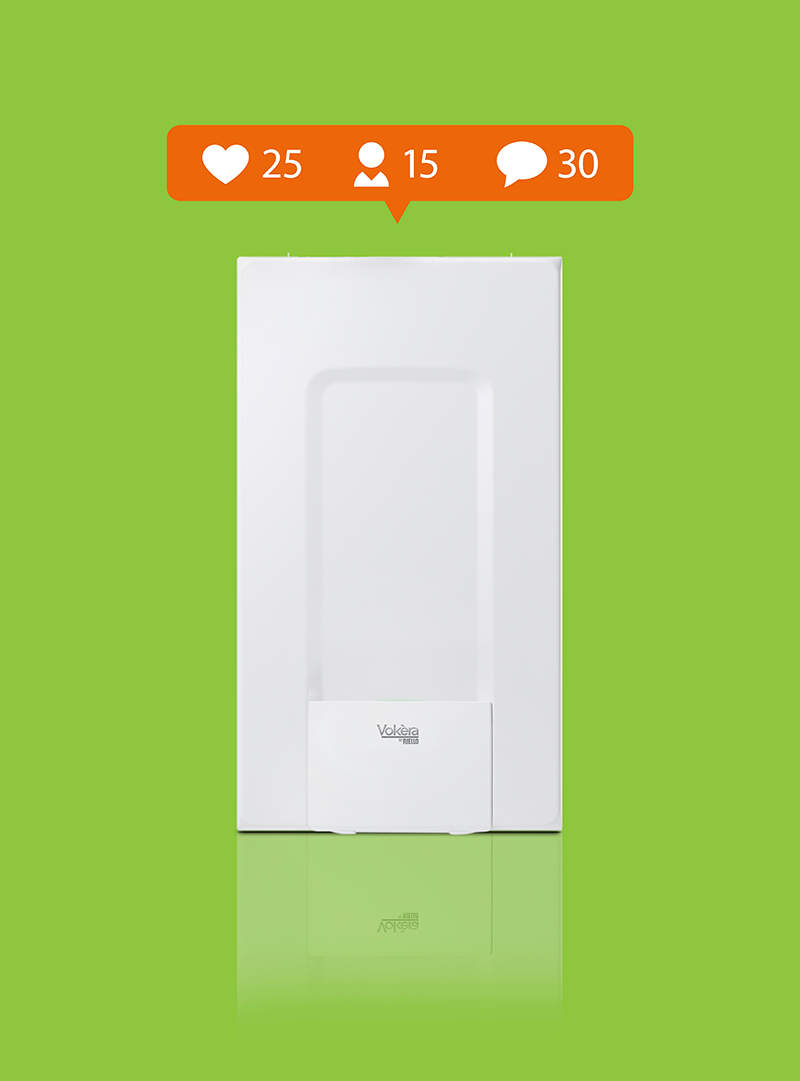
Feb 10, 2020 | News & Events
Love it or hate it, social media is now an integral part of everyday life for many people. Neil Mattock, Marketing Director at Vokèra by Riello, looks at how social networking can also be good for business.
Streamlining communication
Although it may have started out as a communication tool for sharing photos, opinions and events, social media today is used for much more than just social interaction. The popular networking sites, such as Facebook and Twitter, can also be powerful business tools that make it faster and easier than ever before to communicate with customers, suppliers and manufacturers. Companies can talk directly to existing and potential clients via these online platforms and respond more quickly to enquiries, helping to improve their customer service levels. Indeed, social media interaction with heating installers is now part of the daily routine for Vokèra’s Technical Support Team. Industry forums provide an ideal way for us to communicate with installers and we are often able to answer their queries without them having to even pick up a phone. That’s not to say that actually meeting and talking to your customers is no longer important because it is. However, using social media to get an ‘instant’ answer to a question can often be a real boon for a busy installer.
Be selective
From our experience at Vokèra it pays to be selective when using this technology for business, whether you are an installer looking to set up your own business page or profile on social media, or simply following your preferred suppliers. By following the companies you deal with on a regular basis you’ll get instant access to news about their latest promotions, product developments, and any professional training or trade events you may be interested in attending. As well as news updates, these sites are a great place to hear what people are saying and to join in conversations about issues that affect our industry. Vokèra is active on Twitter, Facebook and LinkedIn and we find the interaction with our followers is invaluable in understanding what is important to them. They can communicate their feedback to us in ‘real time’ and send messages directly to key members of our team. Our social media accounts also offer easy access to associated groups including Vokèra BeSMART controls.
Industry forums
Industry forums are another popular form of social networking for the heating industry. These sites may be open to the public or restricted to members-only and have strict rules to encourage positive and respectful online behaviour. The ‘Gas Chat’ group on Facebook, for example, has over 12,000 members and gas heating engineers can chat online with their peers about issues that affect their working lives. They provide a virtual meeting place to share experiences and advice, which many find very useful. In addition, installers can use social media to stay on top of industry news, such as regulatory changes, by following relevant industry bodies and organisations, and then sharing this information with their own followers.
Customer engagement
Many installers also have their own social media accounts to promote their business and generate leads. As already mentioned, social media is all about communication and engagement, so it is important to get the right mix of business and personal messages to connect and build quality relationships with your target audience. Also, it is worth noting that the most commonly-shared content on social media is an image. By including a picture with your posts, possibly a recently completed installation, you can share your successes and significantly increase your chances of getting a follower to share the post with their network, and so on. In fact, there are a few well-known installers who have built a huge number of followers through their strong social media presence and become influencers in our industry.
Although social media sometimes gets a bad press it has clearly helped streamline communication and networking in business and so could be described as the new ‘word of mouth’. If it is used effectively, politely and for genuine communication, social media can be a really valuable platform for a new or existing business, helping to generate new leads, boost brand awareness, share knowledge and build quality relationships with customers.
Follow Vokèra on: Facebook | Twitter | LinkedIn
Jan 21, 2020 | News & Events
Vokèra is looking for professionally qualified service agents to join its UK service network. Applicants must be Gas Safe registered, have their own transport (with full, clean driving licence) and public liability insurance. As well as these core requirements, agents should have a strong work ethic and a polite and professional manner when dealing with our customers.
Successful businesses will work on a subcontract basis, servicing and repairing a range of Vokèra domestic appliances to the highest quality and safety standards. You will work as an Independent Contractor providing labour services in a non-exclusive engagement. Service agents are free to engage their businesses with others.
If you think you’ve got what it takes to become one of our service agents and want to find out more, please send your contact details and a summary of your qualifications and experience to: [email protected].
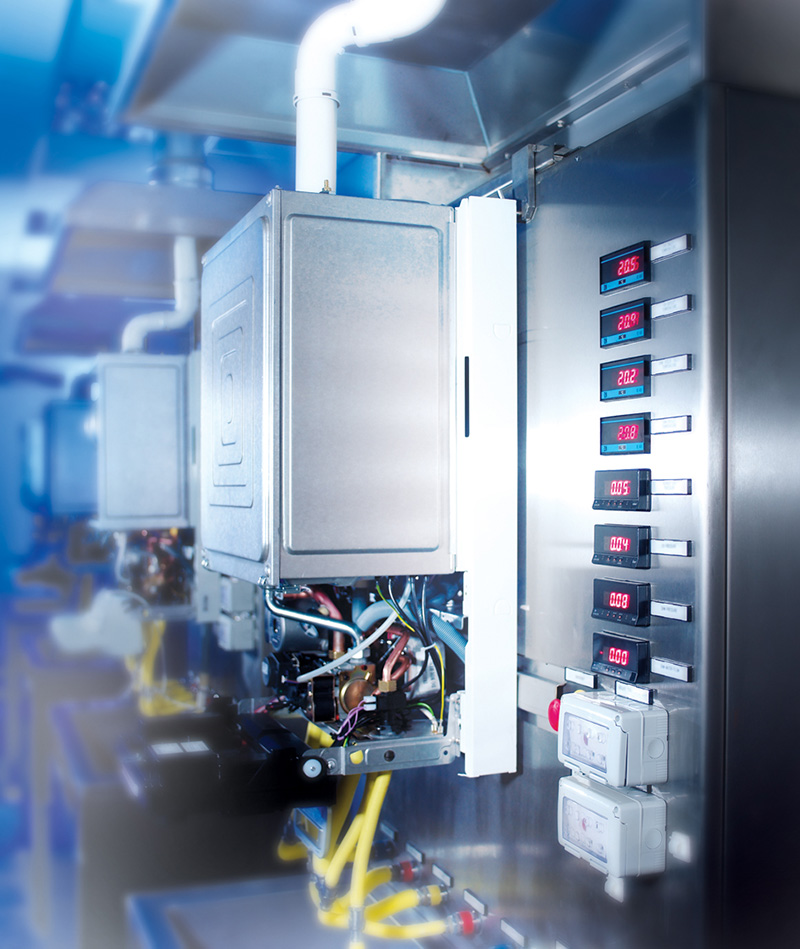
Dec 17, 2019 | News & Events
A skills shortage in the heating and plumbing sector continues to be a cause for concern, so what’s the solution? Margaret Jovanovski, training coordinator at Vokèra by Riello explains how industry manufacturers can help fill the skills gap by offering professional training for the installers of today and tomorrow.
Keeping up to date
The heating sector is constantly evolving as it strives to find more energy efficient ways to provide heating and hot water in our homes. Keeping up to date with advancing technologies, new working practices and changing legislation can be a challenge for a busy Gas Safe Registered/RGII engineer, whether they are a sole trader or part of a local authority team or contracting company. That’s why at Vokèra we believe technical training should always focus on making an installer’s life easier and give them the knowledge and skills they need to enable simple and hassle free repairs and installs. Courses that cover new installation procedures and best practice, for example, can deliver real value and business benefits by helping save time and money on site.
Learning about new industry regulations is another important aspect of training because installers need to understand how any changes in legislation affect the way they work. Also, since the new Boiler Plus initiative came into force in England in April 2018, even greater responsibility has been placed on the installer’s shoulders, so education is key to ensure compliance.
Training partnerships
In addition to training for individual installers, heating appliance manufacturers can also assist colleges, councils and housing associations with high quality training for their students and staff. Vokèra has established more than a dozen partnerships with education facilities that offer plumbing and heating courses, providing them with equipment and other resources for their training departments. And this support has now been extended to allow other colleges to send their students for courses at our well-equipped training centres. To further develop these relationships, we visit councils and colleges on a regular basis to discuss their needs and, in the case of colleges, to find out how we can contribute to creating the next generation of highly skilled heating engineers.
Project support
As an example of these partnerships in action, we recently donated one of our high efficiency evolve gas condensing combi boilers to a community project in Scotland. The boiler is being installed by East Ayrshire Council’s heating and plumbing apprentices, enabling them to gain valuable hands-on experience under professional supervision. A longstanding partner, the Council has been installing Vokèra boilers in its housing stock for about 15 years. As well as contributing a brand new combi boiler for the project, Vokèra is providing the apprentices with commissioning support and training on site by one of its highly qualified technical team.
Finding the right course
As heating products and technology have advanced, training courses have become more wide-ranging and now need to cover the latest electronic controls, for example, and renewable energy solutions. With so much choice we believe it is important to ask installers a few key questions before recommending the most appropriate course, such as how long have you been in business; are you looking for something practical; or are you interested in learning about a specific sector or application. From our experience, given the continuing emphasis on energy efficiency, it’s not surprising that courses focusing on solutions to maximise energy savings for their customers are particularly popular with installers.
Sharing knowledge
Of course, many heating installers now look to one of the many social media sites aimed at heating professionals for advice on a technical issue or maybe a compliance query. Apart from providing an opportunity to share knowledge with other installers, industry forums like Gas Chat on Facebook also provide an ideal platform for manufacturers like Vokèra to communicate with customers and answer their queries.
Few would argue that professional training is key to increasing skills and productivity and assuring the future for the UK heating industry and its workforce. We believe heating manufacturers have a vital part to play in helping to make training more accessible and relevant. Investing in courses for current and future installers will ensure they have the knowledge and experience they need to fit the latest products effectively and safely and to stay ahead of the game.








